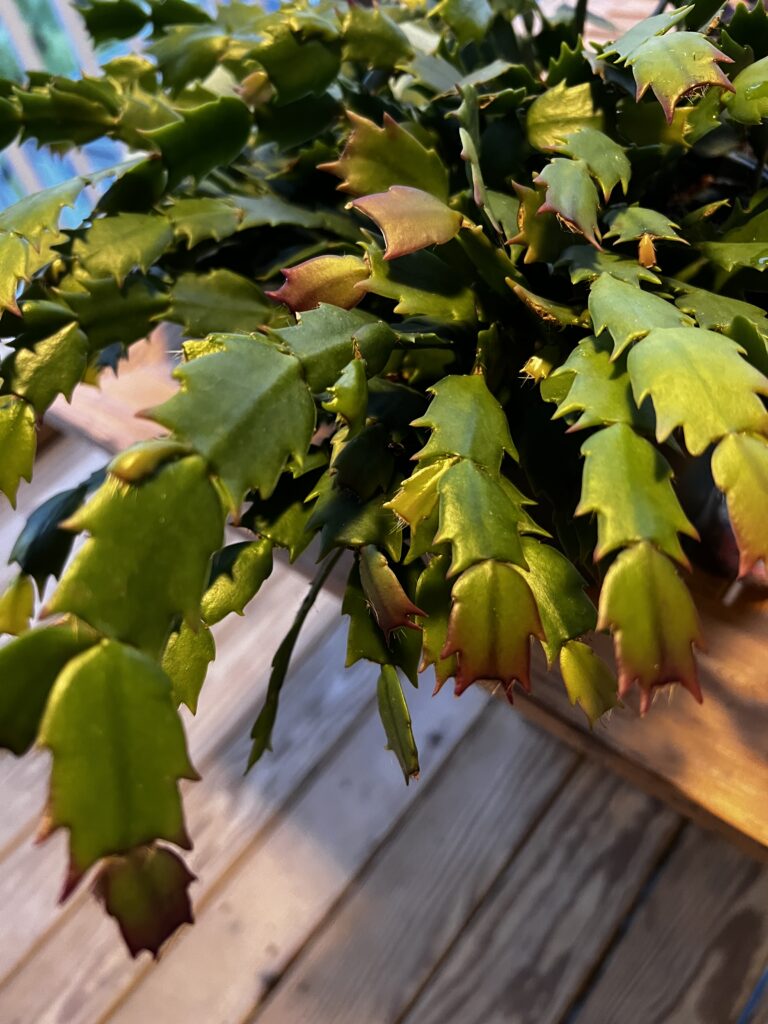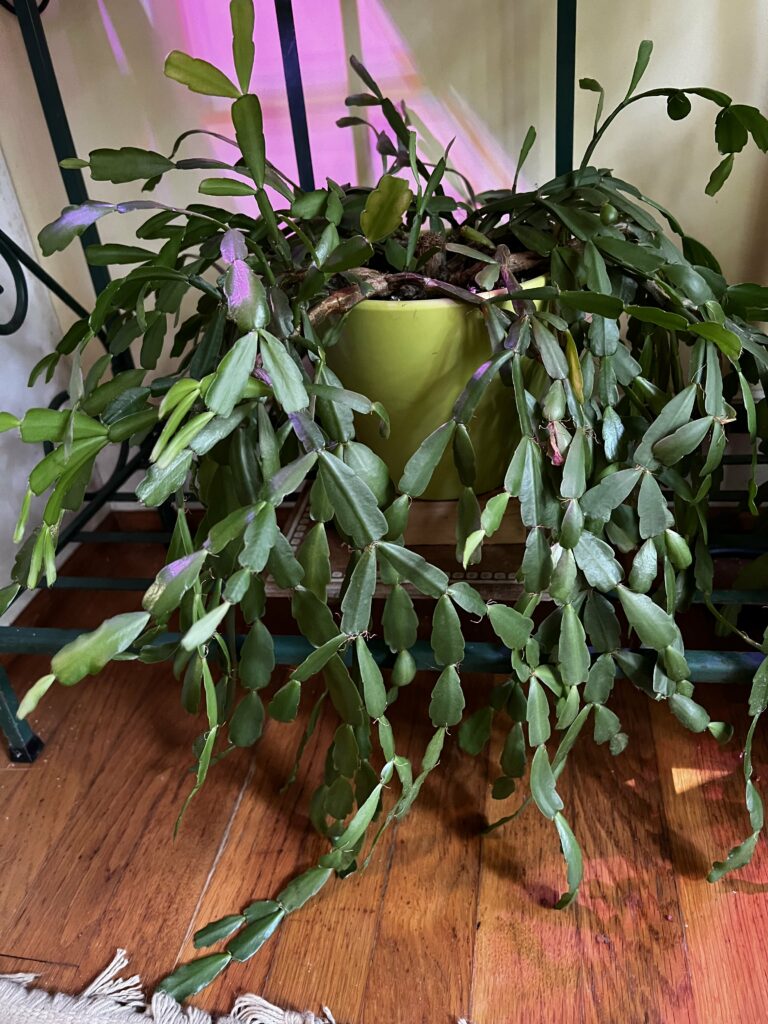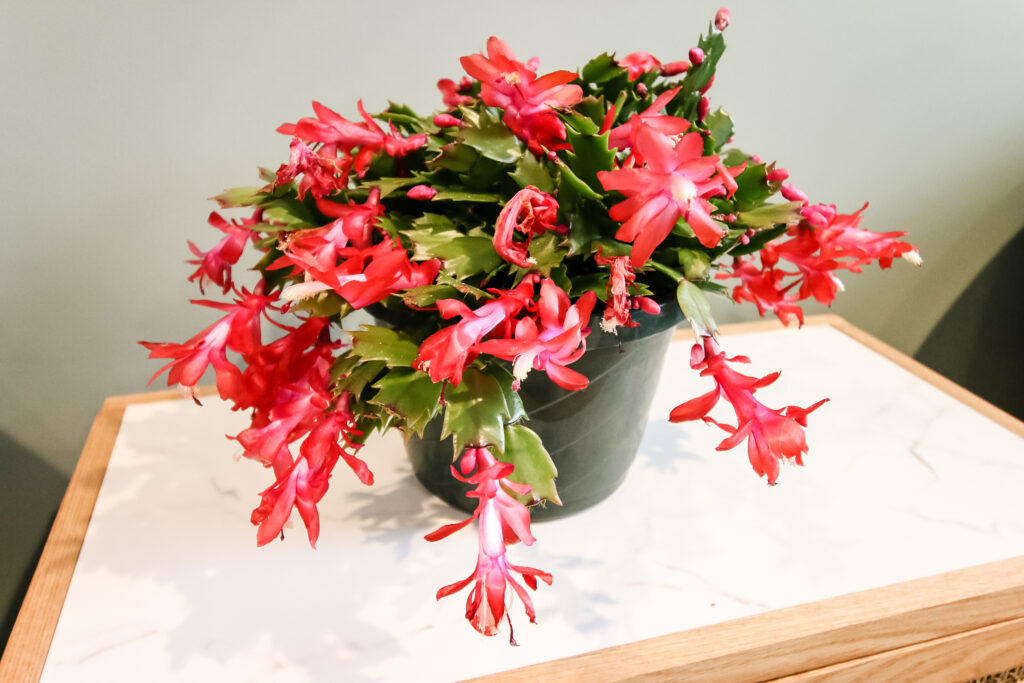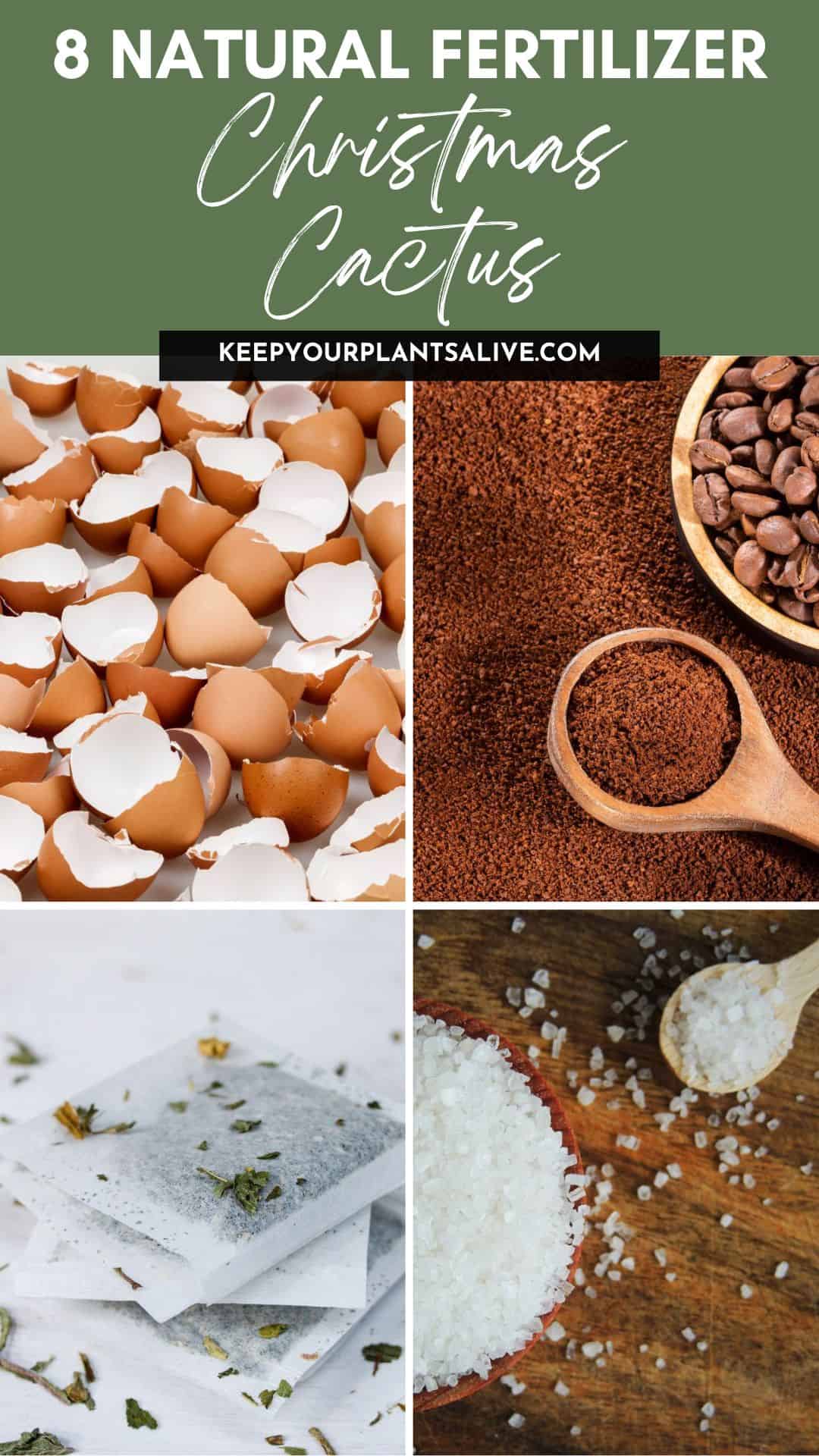Wondering what to do with your holiday cactus? Let's talk about if you can keep a Christmas cactus outside and the factors to consider!
Most times, when you hear the word cactus, you instantly think of a spiky desert plant that grows quite high.
Although that’s relevant in some cases, the type of cactus we will discuss today is a bit different from the image you have in mind.
Christmas cactus is native to the southeast of Brazil, where it naturally grows in the nooks and crannies of other plants or trees in its environment.
But if you weren’t aware of its origin and bought this plant for your home, you might wonder whether you can keep your Christmas cactus outside.
And this is exactly what we’re going to give you an answer to today!
But before we start discussing can Christmas cactus be outside, let’s first familiarize you with the other popular names you might find it under.
These epiphytic plants belong to the genus Schlumbergera and can have different names, some of which you may have heard of.
- Schlumbergera
- Christmas cactus
- Thanksgiving cactus
- Easter cactus
- Crab cactus
- Holiday cactus
Their stems are flat and have serrated edges, and are a lovely dark green color. At the tips of the stems, they produce beautiful flowers with colors that can range from red to pink, white, etc.
As their name implies, these flowers usually begin to bloom during the holiday months.
That's the difference in Christmas, Easter, and Thanksgiving cactus - they bloom at those respective times. And have slightly different leaf shapes.
As a beginner plant parent, you might be confused about how to take proper care of this green, including the question of can Christmas cactus live outside.
What you need to know is that this cactus, which looks more like a succulent than a real cactus, has a few specific requirements you need to consider to make sure you keep them healthy and thriving.

Free printable holiday cactus care guide
Join the (free!) KeepYourPlantsAlive+ community to access this exclusive printable plant care guide! Once you sign up, you can right click & save the JPG care guide. Or keep scrolling for more!

Can you keep a Christmas cactus outside?
While it is possible to keep your Christmas cactus outside, you need to keep a few important things in mind and prepare yourself for them. Let’s dive right into its mesmerizing structure and needs.
Climate conditions
It’s important to know a plant's natural setting in order to take proper care of it.
Originally, the Christmas cactus grows in tropical forests in high humidity, in the shade amongst other trees and rocks. It prefers a cool setting and doesn’t like drastic temperature changes.
They require mild conditions, ideally somewhere between 70°F to about 80°F (21°C to 26°C).
Usually, they thrive in the nighttime when temperatures drop to about 55°F (12°C). That’s when they begin forming the buds of the flowers.
Ideally, the autumnal weather suits them best.
In the summer, depending on the climate, regularly check on their light exposure and keep them away from direct sunlight.
And if you’re wondering when to bring Christmas cactus from outside, know it’s best to do this during winter, when the temperatures are drastically lower than these plants enjoy.

Light exposure
If you’re wondering can Christmas cactus live outside, know that you must make sure it’s placed in a shady area with indirect light.
Each plant is unique in its own way and carries its own set of requirements. Light exposure is a crucial step in the maintenance of any plant.
Although often kept indoors, it is possible to maintain your Christmas cactus outside, as well.
When kept indoors, they enjoy indirect light and a bright spot, so avoid placing them under south-facing windows as the light can be too bright and overbearing for them.
When placed outdoors, they can handle some direct sunlight in the cooler mornings and evenings but no more than that.
Direct sunlight can be very bad for them, especially in the summertime and hot afternoon hours, as the sun can easily scorch their leaves.

Watering limits
Like any other cactus plant, you should be aware of how much water you put into it. The Christmas cactus thrives in a humid setting, so you need to try your best to replicate its environment.
The most important thing you need to remember is to not overwater it. A drenched soil can attract different pests and diseases and cause the plant's roots to rot.
If your plant is outdoors and gets rained on, it could get flooded. That's why proper drainage is so important!
Placing your plant in a humus-rich soil blend and a pot with multiple drainage holes is the best solution. It is extremely important to allow all of that extra moisture to escape.
It is also advised for the soil to be roughly textured, so feel free to add some granite chips or pumice for easier drainage.
Make sure not to leave it overly dry as well. This can cause the roots to die. Once you notice the top layer of the soil is a bit dry, water it appropriately.

Blooming season
When properly cared for, this plant begins to bloom and forms charming flowers at the tip of its stems, regardless of whether you keep your Christmas cactus outside or inside.
In their natural habitat, these plants begin to bloom as soon as the rainy season ends.
It’s important to remember not to change their locations and temperature often, as it can affect the flower buds.
To encourage blooming, you should begin altering your plants' environment around late September or the beginning of October.
While plants require light in order to bloom, the trick for the Christmas cactus is to control the darkness it receives.
When they’re placed outside, during the spring and summertime, they should be kept away from direct sunlight and extreme heat, preferably kept under shade.
When they begin to bloom in the autumn and winter, make sure they enjoy plenty of bright light, thriving temperature, and 13 hours of continuous darkness. This should go on for eight weeks.
Adjusting the amount of darkness can stimulate bud production. If the darkness is somewhat interrupted, even for a short period, it can affect the blooming.
Some plant owners provide the darkness by covering their plants outdoors, either with dark cloths or a box even.
Prune them right after they’ve released the flowers; pruning them any time after that can greatly impact their growth.
After they’ve released their flowers, make sure you maintain the soil for it to not get overly wet or dry. You can add a half-strength fertilizer when the new growth period begins in late winter or early spring; a good option is the 10-10-10.
We truly hope you’ll find this guide answers all concerns you might have about keeping your Christmas cactus outside. If you want to discover more plant-related tips, read the rest of our blogs on our page.
Thanks for reading!


Hey there, I'm Morgan, a houseplant enthusiast from sunny Charleston, South Carolina. Growing up surrounded by my mom's lush orchids and African violets, I discovered the magic of bringing nature indoors. Thanks to the pandemic, I delved deeper into houseplants, discovering their power to uplift moods and transform spaces. I'm here to spill all my secrets, helping you pick the perfect houseplant - and make it happy. Let's keep your plants alive, together! 😊




